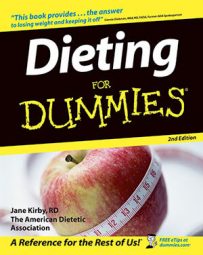Eating a small meal two to three hours before a workout is ideal. Two to three hours is how long it takes for a meal to reach your muscles, but it’s not always practical. Not substituting exercise for eating is important; you can accommodate both.
Energy bars come in all kinds of formulations from the calorie, and sugar-packed cereal bars to the protein-dense energy bars. For a meal replacement, be sure that the bar contains at least 10 grams of protein. If you exercise for more than an hour and need a bar to refuel, carbohydrate-heavy ones are best.
Early birds: If the only time that you can sneak in a workout is first thing in the morning, try to eat something before you start. Your body needs fuel constantly, and your carbohydrate stores have most likely been tapped out in the six to seven hours since your last meal.
Without eating, you’ll feel sluggish and weak. Exercise should make you feel good. It takes only 20 minutes for a piece of fruit to give you the energy that you need to make your workout work for you.
Lunch-hour or after-work crunchers: Split your lunch: Eat half a few hours before the workout and finish the rest when you get back to your desk. If you exercise after work, say about 5:30 p.m. or 6:00 p.m., plan a minimeal — perhaps a small bowl of cereal, a piece of whole-grain bread with just a dab of PB&J, or a cup of lowfat yogurt at 3:00 or 3:30 p.m. in the afternoon.
Weekend warriors: When you’re doing extra exercise — a charity bike ride or a mini-marathon fun run, or a long hike, for example — and stay at it for more than an hour, you need to refuel during the event.
The human body can store only about an hour’s worth of carbohydrate; it’s in the muscles in the form of glycogen. So if you want to finish the race without dragging yourself over the finish line, you need to eat or drink some form of carbohydrate. A sports drink is one option. A small energy bar works, too.
After an especially long workout, you need to refuel to restore your energy. A small high-carbohydrate, moderate-protein, and lowfat meal is best. Reach for fruit, lowfat yogurt, whole-wheat crackers, or bread.
Regardless of how you define “workout,” you need to replace fluid losses, which tend to be great after aerobic activities. Don’t wait for thirst as an indicator; by that time, you’re already down half a quart of fluids.
Water is fine if your workout lasts less than an hour. But sports drinks are helpful if you’re exercising longer. They’re better than soda and fruit juices, which can cause stomach upset during exercise and interfere with fluid absorption because they have too much carbohydrate — about 12 to 15 percent by weight. Sports drinks contain 6 to 9 percent carbohydrate.
So why not water down fruit juice? Research shows that fluid and energy are better absorbed when the drink contains several carbohydrates (sports drinks contain maltodextrins, sucrose, and fructose) that use different absorption mechanisms than when the sweetener comes from a single source. In addition, the small amount of electrolytes, including sodium, that sports drinks provide can replenish those lost through sweat.

